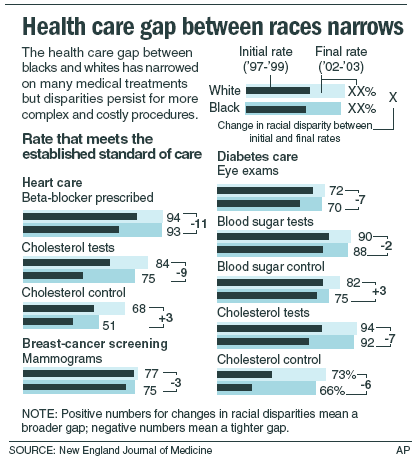
Across the nation, disparities in the quality of hospital care between whites and Blacks have drastically decreased for those suffering from acute myocardial infarction, heart failure and pneumonia, according to a study from the University of Pittsburgh published last week.
The study results paint a hopeful, optimistic picture about the future of healthcare.
Past studies revealed that many elderly Black and Latino patients were being treated in hospitals that had extremely poor performance ratings, which raised serious concerns about the current reward systems for hospitals.
Some hospitals operate under what many have deemed a “pay-for-performance” plan.
Under such plans, hospitals are rewarded for reporting positive health outcomes.
With certain illnesses being far more common in African-Americans, hospitals that served predominantly Black patients did not have as positive health outcomes as ones that had far fewer patients of color.
This ultimately led to many hospitals with Black and Latino patients to be punished while those that did not have many patients of color were able to secure additional funding.
“Equity is a key dimension in health care quality,” the study states. “Therefore, efforts to gauge progress in quality of care must include explicit considerations of whether gains have also occurred in health care quality.”
Based on reports from 2005 to 2010, there has been “increased racial and ethnic equity” for Black and Latino adults who were hospitalized.

The study took a look at 17 procedures that worked to improve the outcomes of certain health problems, such as giving aspirin to heart-attack patients and influenza vaccinations to pneumonia patients.
According to the study, nine metrics had gaps between white patients and patients of color back in 2005 but now those gaps are significantly smaller.
The darker side of the findings is the fact that it seems to confirm that patients of color, even in the same hospital as white patients, were given lower quality care for the same illnesses or conditions.
While disparities for these particular illnesses are decreasing, another study revealed disparities persist in patients who are struggling to control blood pressure, cholesterol and glucose levels.
A Harvard-based study, which was recently published in the New England Journal of Medicine, said that such differences mean health outcomes will still be skewed across races.
With cholesterol and blood pressure problems being extremely common in African-Americans, some experts believe future studies will have to take a closer look at patient outcomes and the “realities of a person’s life.”
In other words, access to healthy food, medications and safe places to exercise as well as finding time to exercise are all problems that need to be factored in when discussions equality in health.


